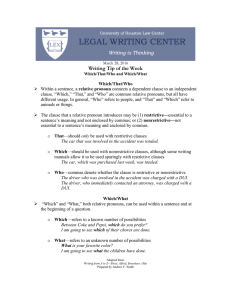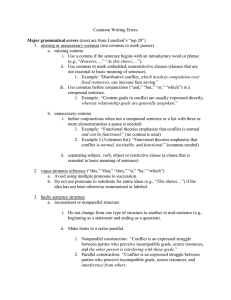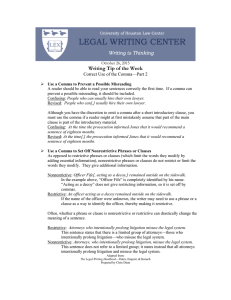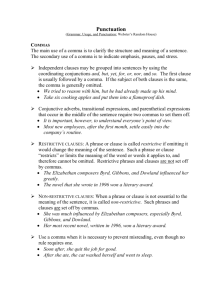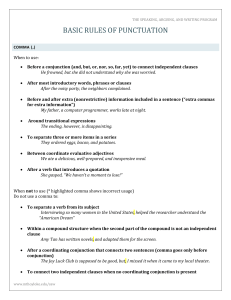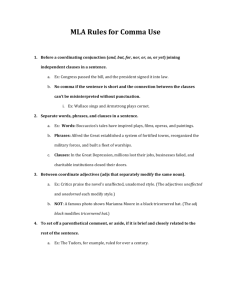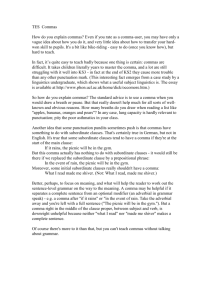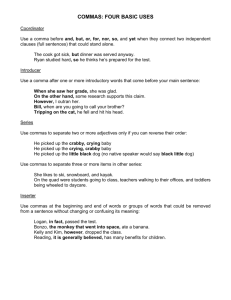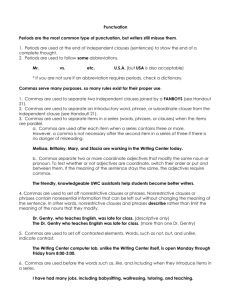Ree's Comma Notes
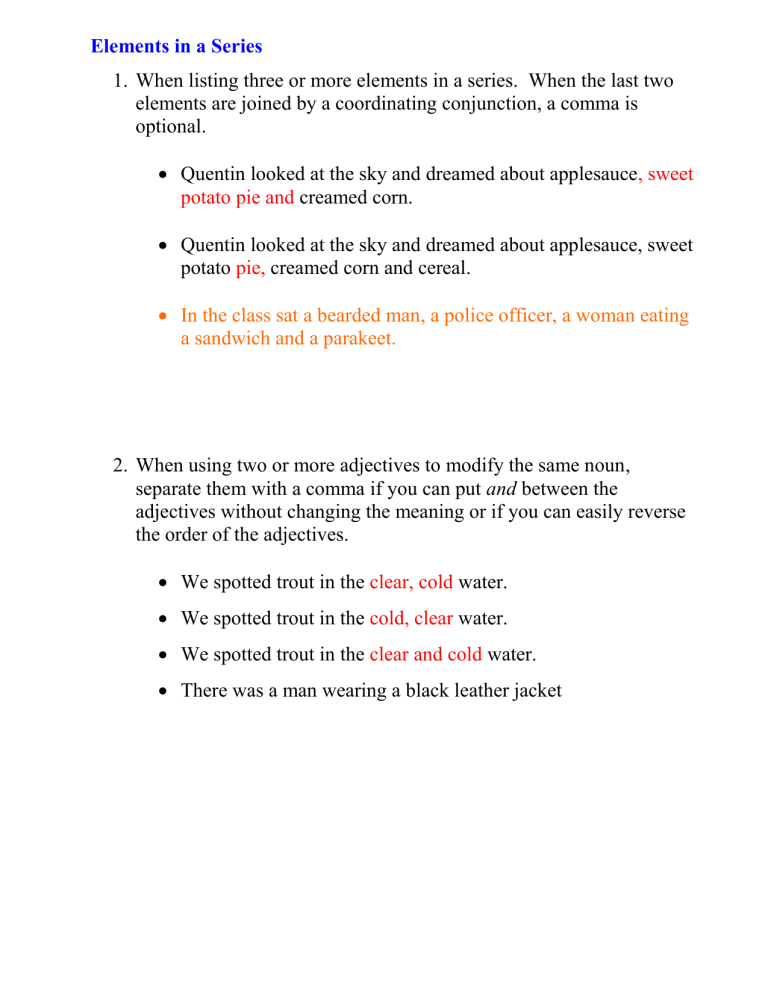
Elements in a Series
1.
When listing three or more elements in a series. When the last two elements are joined by a coordinating conjunction, a comma is optional.
Quentin looked at the sky and dreamed about applesauce , sweet potato pie and creamed corn.
Quentin looked at the sky and dreamed about applesauce, sweet potato pie, creamed corn and cereal.
In the class sat a bearded man, a police officer, a woman eating a sandwich and a parakeet.
2.
When using two or more adjectives to modify the same noun, separate them with a comma if you can put and between the adjectives without changing the meaning or if you can easily reverse the order of the adjectives.
We spotted trout in the clear, cold water.
We spotted trout in the cold, clear water.
We spotted trout in the clear and cold water.
There was a man wearing a black leather jacket
Introductory Elements
1.
After introductory words.
Yes, I have always wanted to have a wisdom tooth pulled without any anesthetic.
Thus, the game was going to start.
Bobby, did you eat the cookie?
2.
After prepositional phrases of more than three words.
In a final ironic twist, Abner’s job in prison was making matches.
Between the house and the yard, Martin stored his old bike.
3.
After introductory infinitives and participle phrases (when not the subject of the main clause).
To find the Holy Grail, Perceval spent years wandering throughout Europe and Great Britain.
Approaching the crash site, Matt Scudder slowed to a stop.
4.
After subordinate clauses.
When we got to the top, we wrote a message to those who would follow us.
After he spent a sleepless night, Dr. Scarpetta knew who the main suspect was.
Commas
Use commas to set off a nonrestrictive phrase or clause
1.
Nonrestrictive clauses: these are elements that are not necessary for the sentence to make good sense. They add a fact that, while interesting, is not essential. When a word in the sentence is modified by a nonrestrictive phrase or clause, the writer should use commas to set it off.
Nonrestrictive Adjective clause:
My brother, who is a park ranger, showed me his collection of arrowheads.
Nonrestrictive Appositive:
The Titanic , a great cruise ship, sank on its maiden voyage.
Nonrestrictive Participle
Inspector Morse , embarrassed by his first name, refused to reveal his first name.
Richard Gregory’s essay entitled “Shame” talks about the causes of shame.
Marry Shelley’s book
Frankenstein discusses ….
2. Restrictive clauses and phrases do not use commas because they are essential to the meaning of the sentence. If they are omitted, the meaning is significantly altered.
Restrictive Adjective clause:
She told the officer who brought her home about the robbery.
Restrictive Appositive:
Of all the men I have been married to, my ex-husband Hugo is the best cook.
Restrictive Participle
The singer, wearing a blue dress, won the award.
Places and Dates (with multiple elements)
1. Places and dates are treated as insertions or interrupters. Note that commas surround a year or state.
The hospital was in , Wisconsin, not far from Omro.
I was born on August 15 , 1984, at seven in the morning.
Commas with Quotations Marks
1. Use a comma after words before a direct quotation, such as said, asked, wrote, exclaimed…before a quotation.
Socrates said, “Know thyself.”
7. Use a comma with FANBOYS when connecting two main clauses.
Jane went to the store. Bob went to the store.
